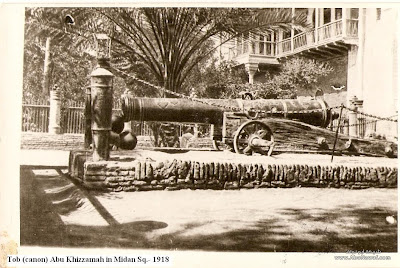 A couple of days ago, Iraqis recalled one of the darkest moments in their country's history when two GBU-27 laser-guided bombs were dropped by stealth fighter planes on Al Amiriya shelter in Baghdad, at about 4 a.m. on Feb. 13, 1991. This resulted in more than 400 men, women and children burned to death. It has been said that the children were asked by their parents to keep on watching cartoons so they won't be afraid.
A couple of days ago, Iraqis recalled one of the darkest moments in their country's history when two GBU-27 laser-guided bombs were dropped by stealth fighter planes on Al Amiriya shelter in Baghdad, at about 4 a.m. on Feb. 13, 1991. This resulted in more than 400 men, women and children burned to death. It has been said that the children were asked by their parents to keep on watching cartoons so they won't be afraid.The first missile cut through ten feet of reinforced concrete before a time-delayed fuse exploded. Minutes later the second bomb followed the path cut by the first bomb.The explosion inside the bunker pressed the bodies against walls and ceiling, caused a very high temperature., thus carbonizing both flesh and walls. When rescue began, there were bodies found pressed against walls, which were less carbonized. One clearly recognises shapes of bodies, faces, mothers holding children.
According to the U.S. officials at that time, it has been thought that the shelter was a command center. Some rumors were circulating at that time that Saddam Hussain himself and his commanders were hiding in that bunker. The White House, though, in a report titled Apparatus of Lies: Crafting Tragedy, stated then that US intelligence sources reported the blockhouse was being used for military command purposes. The report goes on to accuse the Iraqi government of deliberately keeping "select civilians" in a military facility at Amiriyah. However, Jeremy Bowen, a BBC correspondent, was one of the first television reporters on the scene after the blast. Bowen was given access to the site and confirmed that no evidence of military use (report aired the next day on BBC1).
The shelter now is considered as a shrine where pictures of the dead babies, women and children hanging can be seen. However, many of the traces of that massacare can be seen in different spots.
Many things have been written on Al Amiriya Shelter, such as the article written by Ali Asadullah in 2000, or Ibrahim Alloush's article in 2002, or how Ramzy Baroud's called it the chamber of horror in his article in 2003. However, there is a exclusive blog (in Arabic and English) on the tragedy, can found here to commemorate the victims of Al Amiriya Shelter. It is by a blogger under the name Sahab, who also created another blog about the children from al Hanan orphanage. It contains many pictures and videos, in addition to eye witnesses and interviews with people concerning this genocide. In addition, in 2001 a research center has been established in Madrid, Spain named after the doomed site i.e. Al Amiriya Center for Documentation and International Initiatives, that deals with the autrocities committed by U.S. forces during that war (they seems to fail to foresee the future and the events followed 2003 and until now).
God bless the souls of Al Amiriya Shelter vicitims, and may they rest in peace, forever and ever.
Below is a video filmed in 2003 of the shelter



























